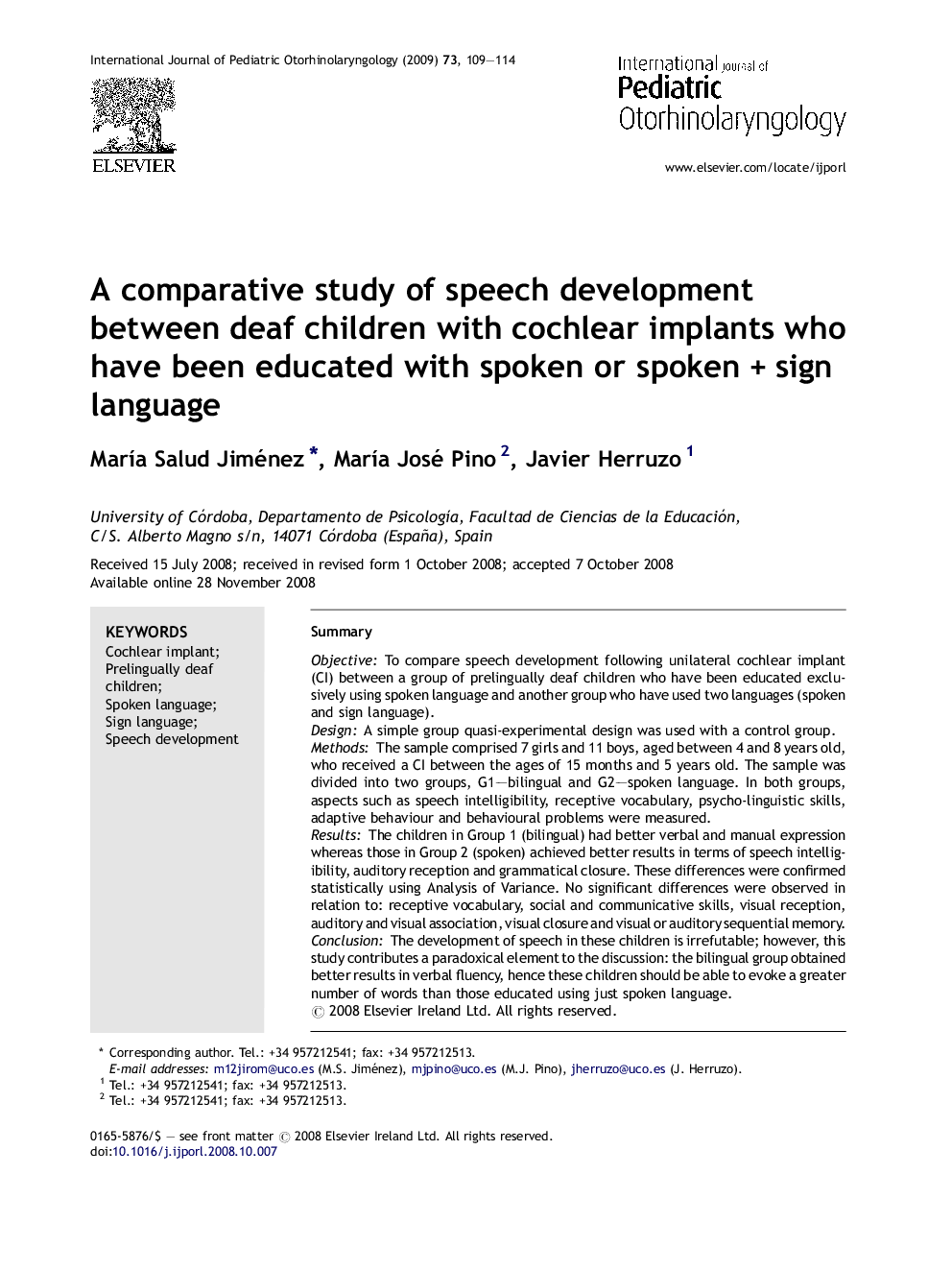| Article ID | Journal | Published Year | Pages | File Type |
|---|---|---|---|---|
| 4115395 | International Journal of Pediatric Otorhinolaryngology | 2009 | 6 Pages |
SummaryObjectiveTo compare speech development following unilateral cochlear implant (CI) between a group of prelingually deaf children who have been educated exclusively using spoken language and another group who have used two languages (spoken and sign language).DesignA simple group quasi-experimental design was used with a control group.MethodsThe sample comprised 7 girls and 11 boys, aged between 4 and 8 years old, who received a CI between the ages of 15 months and 5 years old. The sample was divided into two groups, G1—bilingual and G2—spoken language. In both groups, aspects such as speech intelligibility, receptive vocabulary, psycho-linguistic skills, adaptive behaviour and behavioural problems were measured.ResultsThe children in Group 1 (bilingual) had better verbal and manual expression whereas those in Group 2 (spoken) achieved better results in terms of speech intelligibility, auditory reception and grammatical closure. These differences were confirmed statistically using Analysis of Variance. No significant differences were observed in relation to: receptive vocabulary, social and communicative skills, visual reception, auditory and visual association, visual closure and visual or auditory sequential memory.ConclusionThe development of speech in these children is irrefutable; however, this study contributes a paradoxical element to the discussion: the bilingual group obtained better results in verbal fluency, hence these children should be able to evoke a greater number of words than those educated using just spoken language.
